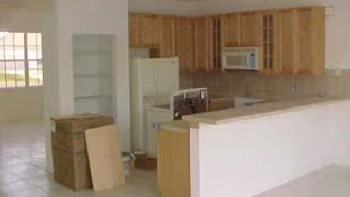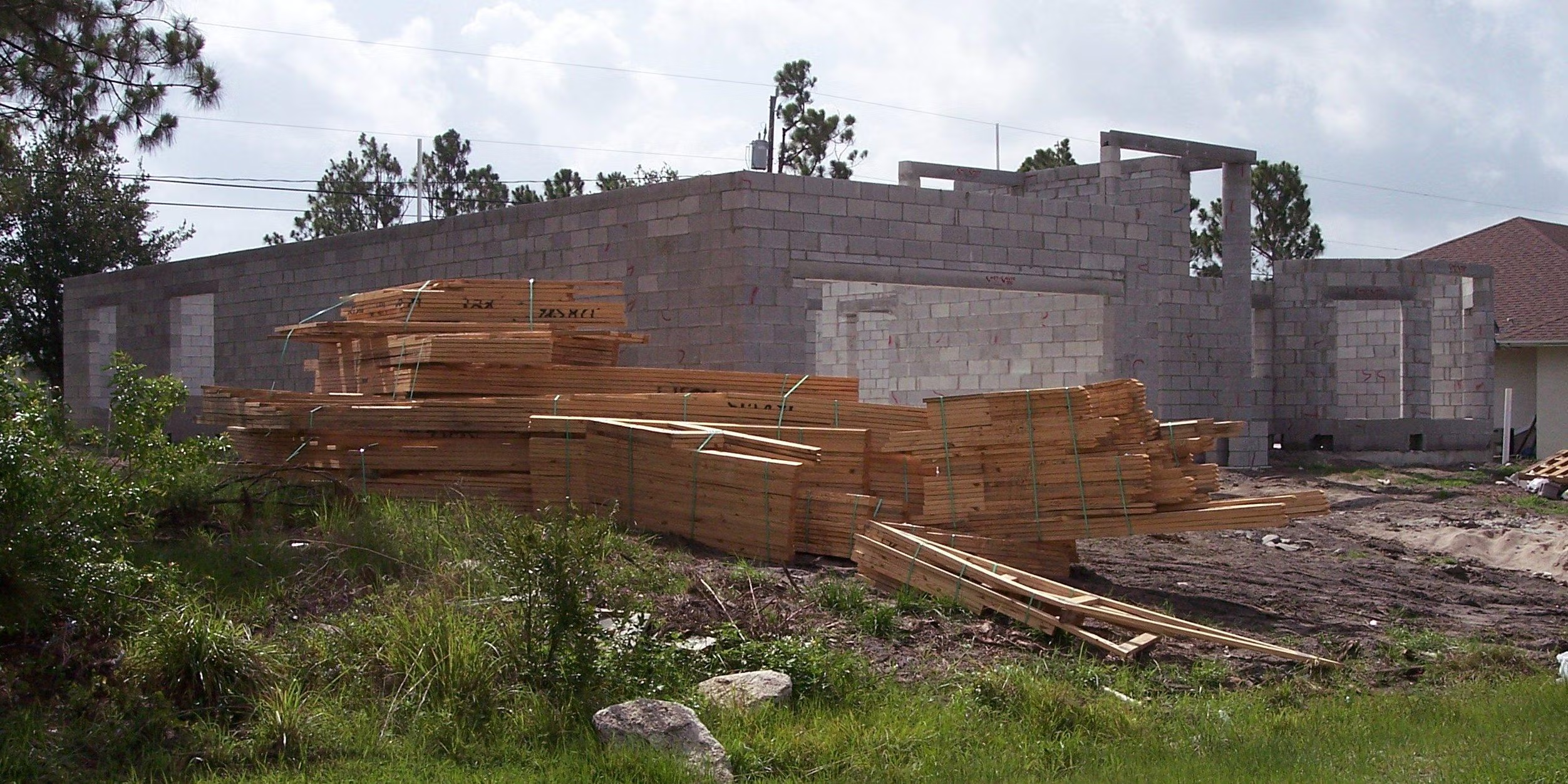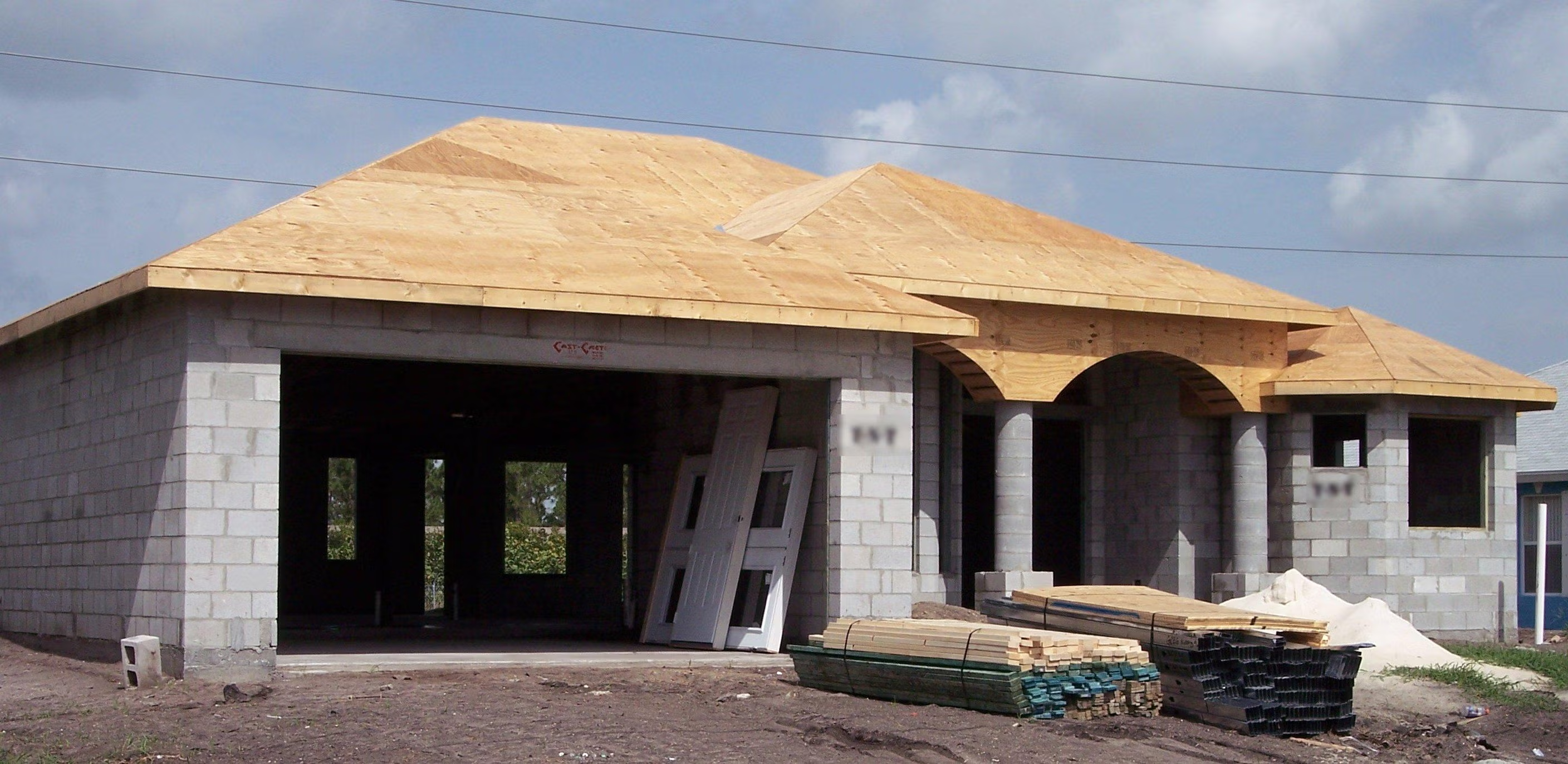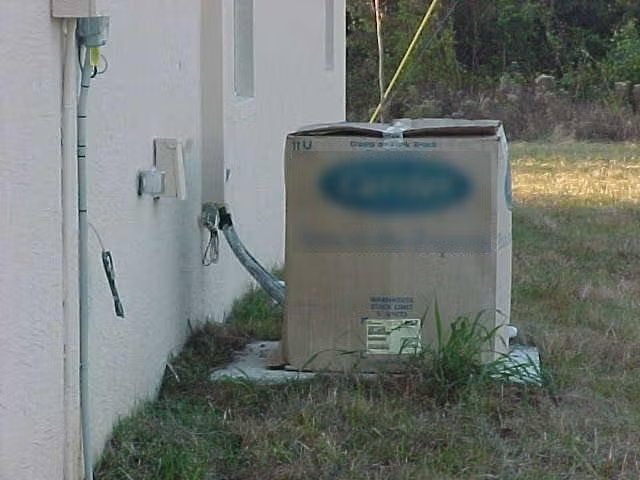
Center for Problem-Oriented Policing
Burglary at Single-Family House Construction Sites
Guide No. 43 (2006)
The Problem of Burglary at Single-Family House Construction Sites
What This Guide Covers
This guide begins by describing the problem of burglary at single-family house construction sites and reviewing the factors that increase its risks. It then identifies a series of questions that can help analyze your local burglary problem. Finally, it reviews responses to the problem of burglary at single-family house construction sites as identified through research and police practice.
Burglary at single-family house construction sites is but one of a larger set of problems related to burglary and to construction sites. This guide focuses on burglary of building materials, tools, appliances, and small equipment from single-family house construction sites. Although there are many similarities between burglaries at single-family house sites and those at multifamily or commercial sites, the varying physical and logistical characteristics of the two types of sites require the utilization of very different crime prevention techniques. In addition, the theft of heavy construction equipment, such as backhoes and loaders, from single-family sites poses a unique crime prevention problem because of the size, cost, and mobility of such equipment. Related problems not directly addressed in this guide, each of which requires separate analysis, include:
- burglary and theft at commercial, apartment, and condominium construction sites
- burglary of single-family houses
- theft of heavy construction equipment
- theft of scrap metal
- stolen goods markets
- vandalism at construction sites
- insurance fraud.
General Description of the Problem
Burglary at single-family house construction sites is the taking of property from houses under construction or from the area immediately surrounding the house. Depending upon whether the person who stole the property was lawfully on the premises or not, the crime is either defined as burglary or theft. For convenience sake, this guide will refer to both crimes as construction site burglary.
There is far less research on construction site burglary than there is on residential burglary.[1] However, construction site burglary has been recognized as a significant problem in the United States and elsewhere in the world, including Canada, Australia, Europe, and Japan.[2] Estimates from the United States indicate that between $1 billion and $4 billion worth of materials, tools, and construction equipment are stolen every year.[3] The wide range of estimates is attributable to the lack of reporting to police and insurance companies by builders and contractors.[4] Between 5 percent and 20 percent of the cost of building a residential subdivision goes to the burglary of tools and equipment.[5] In addition to property losses, there are indirect expenses that also impact the cost of construction; these include job delays, downtime for operators, higher insurance premiums, and cancellation of insurance.[6] These direct and indirect losses to builders and contractors are passed on to house buyers, resulting in an average increase of 1 percent to 2 percent in the price of a new house.[7]
Factors Contributing to Burglary at Single-Family House Construction Sites
Understanding the factors that contribute to the problem of single-family house construction site burglary will help to frame local analysis, to determine good effectiveness measures, to recognize key intervention points, and to select appropriate responses. The following factors make such construction sites particularly vulnerable to burglary.
Construction Material Costs
The high cost of construction materials induces some people—including some contractors—to steal materials from construction sites in order to reduce their own building costs. In recent years, there has been a dramatic increase in the price of construction materials. For example, from January 2003 to May 2004 the price index of 11 key construction materials more than doubled.[8] Thus, the local home building economy affects construction site burglary rates. Local material shortages, including those caused by natural disasters, will similarly affect the nature and amount of construction site property stolen.[9]
Lax Builder Practices
Certain practices by building contractors can contribute to burglary. For example, delivering appliances to a site before they can be secured in the house increases the opportunity for burglary. Lax tool tracking practices can also lead to theft. Builders and contractors may save time by not checking tools in and out daily, but a lack of control and oversight can give employees the impression that their employer does not care if tools are taken or may convince them that burglars are unlikely to be caught and prosecuted.[10] Finally, many builders treat burglary as an unavoidable cost of business[11] and seek to offset their losses by increasing house prices.

appliances left uninstalled in the kitchen.
Credit: Rachel Boba and Roberto Santos
In this house under construction, the front door was left wide open with
appliances left uninstalled in the kitchen.
Credit: Rachel Boba and Roberto Santos
Burglars
Burglars commit burglary, quite naturally, for the money. The decision to burgle is influenced by the perception of the ease with which a crime can be committed; in addition, burglars are commonly influenced by others.[12] Burglars often know their victims, who can include casual acquaintances, neighborhood residents, people to whom they have provided a service, or the friends or relatives of close friends. Burglars either do not give much weight to the potential consequences of their actions or believe that there is little chance of getting caught. And in fact they are correct: burglars are rarely caught; national burglary clearance rates are only around 13 percent.[13] Clearance rates for construction crime in particular are not recorded nationally, but these offenders seem to be caught even less often.[14]
Although little specific research has been done, some researchers have classified construction site burglars into three categories: amateur opportunists, insiders (such as employees and rival contractors), and professional thieves.[15] Common to all of these types is the ability to blend in with regular construction workers.[16] There follows a more detailed discussion of each type of construction site burglar.
Amateur opportunists: Amateur opportunists live or travel near construction sites, see property on the site, and take it based upon an immediate evaluation of rewards and risks. They do not typically plan their crimes in advance, but rather act upon an immediate opportunity. However, they may also take property after seeing it unprotected for a long period of time as they travel past the construction site. Burglary of smaller materials and tools at times when workers are not present may indicate this type of offender.
Professional thieves: Professional thieves make their living burglarizing property and selling stolen goods. They plan their crimes in advance and tend to have an intricate knowledge of the areas where their crimes are committed. Larger hauls or the theft of high dollar items may signify an organized burglary effort.
Insiders: Insiders work for builders, contractors, or rival companies. They either have knowledge of a specific builder's construction practices and access to keys, tools, and materials, or they have a general knowledge of construction practices, such as how to disassemble an air conditioning unit or the stage at which appliances are typically delivered. Generally, a high percentage of employee thefts begin with opportunities that are regularly presented to them. If security is lacking and management is indifferent, the temptation to take items that are improperly secured or accounted for may be too much for these individuals to resist.[17] Daytime burglaries, the theft of goods with tight schedules between delivery and installation, or burglaries where complex deinstallations occur with minimal property damage may indicate that crimes are being committed by insiders.
Physical Environment of Single-Family House Construction Sites
Construction sites are interesting places. People passing by may stop to see what is being built or may even walk through the site. The simple curiosity that draws many people to construction sites also increases the probability that some people will then trespass or take unprotected property from the site.
The physical environment can affect the opportunities for crime at a particular location.[18] For example, in planning their crimes, residential burglars consider occupancy cues (for example, the presence of cars, residents, and voices or other noises), surveillability cues (for example, whether they can be seen by neighbors or passersby), and accessibility cues (for example, how well the site is protected by doors, fences, or locks).[19] Nearly all the cues that would prevent an offender from committing a residential burglary are typically lacking at single-family house construction sites: both the house under construction and the houses surrounding the construction site are generally unoccupied; at certain stages of construction the house has neither windows nor locking doors; and so forth. The following are specific physical features that render single-family house construction sites vulnerable to burglary.

unprotected during the early stages of a construction site.
Credit: Rachel Boba and Roberto Santos
- Construction sites are transitional by nature. Individual construction sites as well as entire subdivisions in which houses are under construction are transitional by nature. At each of the different stages of construction—laying the foundation, installing the roof, installing the doors and windows, locking the house—a different set of criminal opportunities is presented, because different materials are necessary and vulnerable at various times. In addition, the speed at which houses and subdivisions are built can affect the amount of time at which the construction site is at risk.
- Houses under construction are neither occupied nor easily watched. A house under construction is unoccupied, so it does not have the usual level of guardianship. Whether in a subdivision or at an individual site, a house under construction may be isolated from view because it is set back from the road, situated on a large lot, or located next to nonresidential land, such as a park, waterway, or wooded area. This reduces the chance that neighbors or passersby will see or hear a burglar.
- Houses under construction are easily accessed. Houses under construction typically do not have fencing or other mechanisms that deter trespassing. Property left on the site is often left unprotected—lying on the ground, in open garages, or in a partially constructed, unsecurable house. Some property, such as air conditioner units, are vulnerable even when installed because they are located outside the house, where they are virtually unprotected.

doors left unprotected.
Credit: Rachel Boba and Roberto Santos
Repeat Victimization§
Patterns of repeat victimization for burglary at single-family house construction sites may not be obvious. Although a particular construction site might not be victimized repeatedly, a particular builder may be.[20] For example, a comprehensive study in Port St. Lucie, Florida found that although only 12 of 254 individual sites were burglarized twice, 20 percent of builders accounted for nearly 70 percent of burglaries.[21]
§ See the Problem-Solving Tools Guide on Analyzing Repeat Victimization.
Goods Stolen
Property taken in construction site burglaries is rarely recovered.[22] However, the type of goods that are taken may indicate the motivations of the offender. Amateur opportunists may take generic building materials for use in their own houses, such as plywood, lumber, or ladders. Professional thieves may take property that can be sold in an unregulated second-hand market, such as ceramic tiles, faucets, toilets, doors, and windows.[23] Insiders may be more likely to take tools and small equipment or items that take some skill or effort to remove.

Credit: Rachel Boba and Roberto Santos
Times, Days, and Seasons
Unlike residential and commercial burglaries, there is little research that indicates when construction site burglaries predominantly occur. And in fact, because of the lack of guardianship and the large number of workers that frequent a site, it would seem that construction site burglaries could occur at any time of day and on any day of the week. However, analyzing local burglary data may allow you to determine whether burglars prefer a particular time or day, which in turn will allow you to develop responses tailored to your local circumstances.
Because there are typically no witnesses to these crimes, the exact time of occurrence may be difficult to determine. Thus, it can be helpful to analyze the length of time that the property was left as risk.
The time period after a house has lockable windows and doors but before the house is occupied is a particularly vulnerable construction stage, because a large number of desirable types of property (for example, washers, dryers, and refrigerators) are in the house during this time. Burglaries in subdivisions may occur more often during the early construction stages (such as after the laying of the foundation), but before the first residents start moving in because of the availability of desirable construction materials and the lack of guardianship. Once again, because there is no research on this topic, it is important to determine when houses under construction are most vulnerable within your community. Lastly, construction cycles and schedules vary considerably by region, due to factors such as weather and national and local economics. Anticipating booms in construction based on these factors may assist in identifying a potential problem or in determining if an existing problem will continue.
Free Bound Copies of the Problem Guides
You may order free bound copies in any of three ways:
Online: Department of Justice COPS Response Center
Email: [email protected]
Phone: 800-421-6770 or 202-307-1480
Allow several days for delivery.
Email sent. Thank you.
Burglary at Single-Family House Construction Sites
Send an e-mail with a link to this guide.
* required
Error sending email. Please review your enteries below.
To *
Separate multiple addresses with commas (,)
- Your Name *
Your E-mail *
Copy me
Note: (200 character limit; no HTML)
Please limit your note to 200 characters.